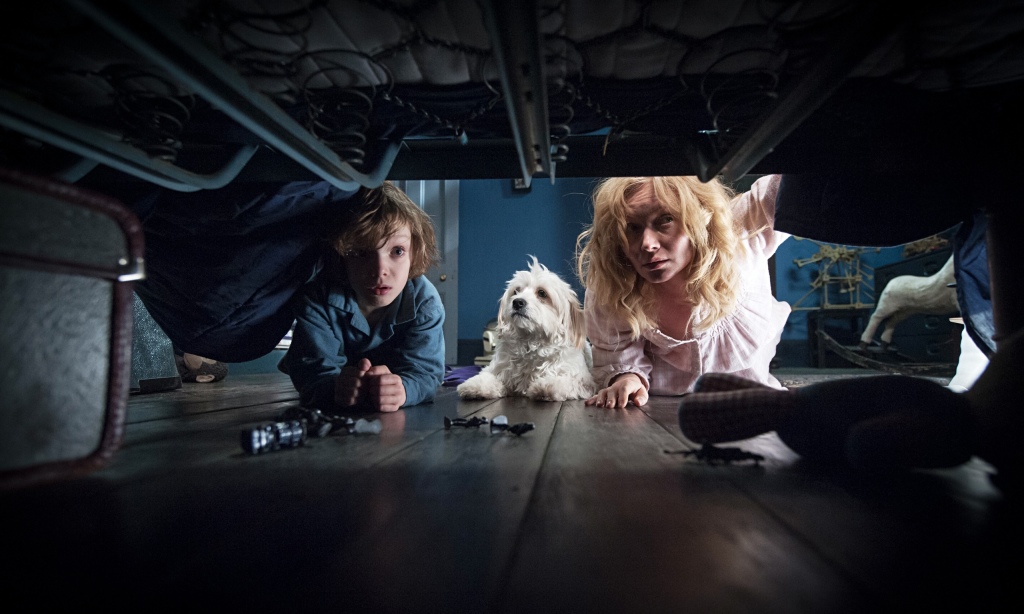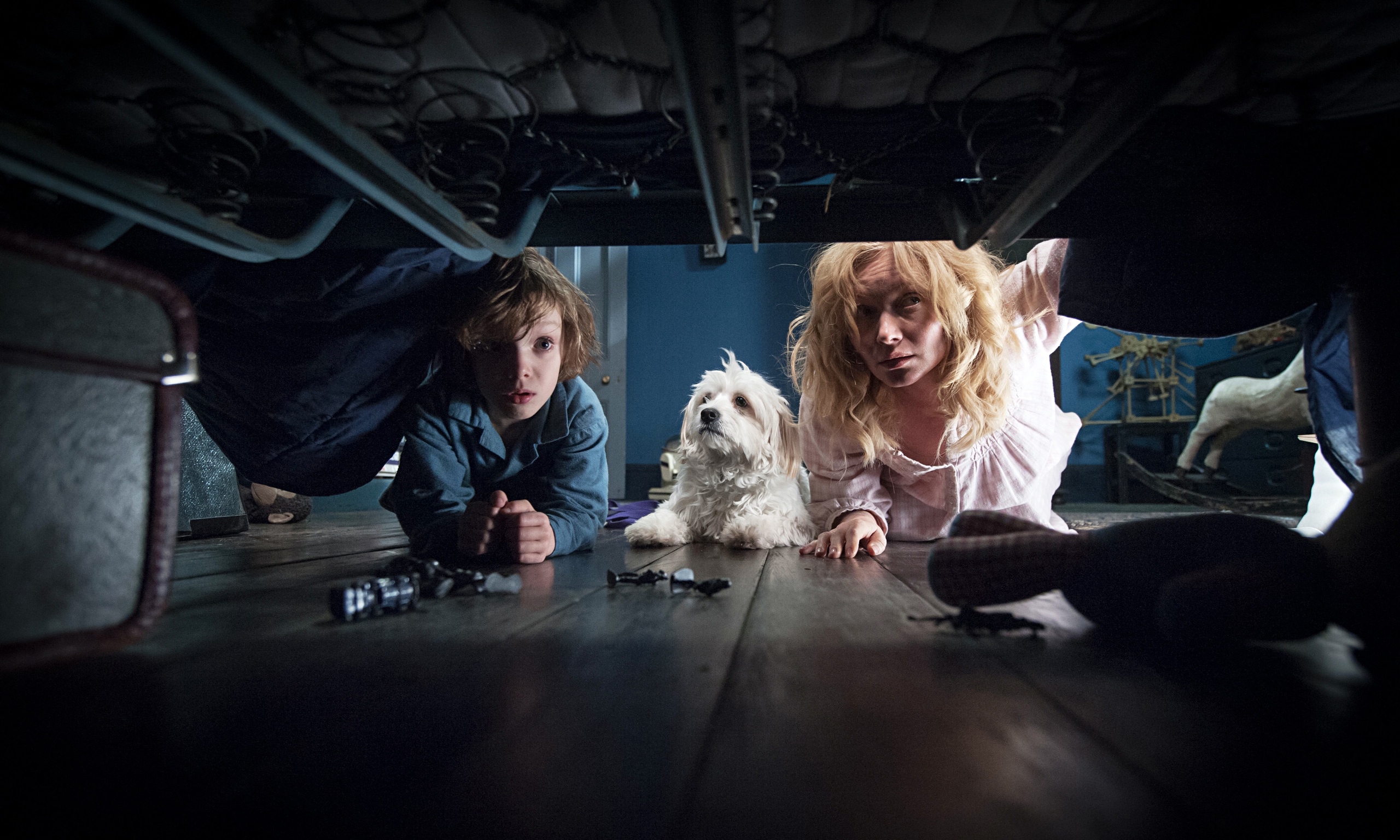Following the release of The Babadook on DVD, TOM GLEDHILL gives his take on a film that ‘will stay with you long after you’ve left the cinema.’
The Babadook is something of an anomaly in terms of modern horror. Not only does it elicit a very real sense of dread for large portions of its running time, but also takes its time in establishing character and nurturing two central nuanced and believable performances. It is, at its core, a psychological study of the relationship between mother and son—shying away from both the voyeuristic gore of the dying torture-porn scene, and the cheap jump-scares so prevalent in modern cattle-prod cinema. Instead, first-time director Jennifer Kent opts for a slow creeping sense of unease, nowhere more clear than in her introduction of the titular monster. A large red pop-up book entitled ‘Mr. Babadook’ appears on Samuel’s bookshelf, one which he insists his mother, Amelia, read to him. As she reads aloud, we’re read the story in turn, her narration peeling off as the seemingly harmless book takes a twisted, dark turn. We, the audience, finish the story ourselves. This, in and of itself, is symbolic of why the film is quite so impressive when it really gets into its stride: it chooses hint and suggestion over explicit depiction. Mr. Babadook inhabits murky corners of rooms, is seen fleetingly in the silhouette of a jacket and gloves and is constantly creaking something, somewhere in the depths of the house.

Kent, who also wrote the film, is in complete control throughout, manipulating the camera with real subtlety and craft, especially when spliced portions of classic horror films become increasingly feverish and fragmented, displaying Amelia’s shifting mental states. Most impressive about Kent’s direction is her ability to portray both Amelia and Samuel in oscillating positions of power; both are tormented and tormenters, in positions of dominance and vulnerability. It’s this constantly changing dynamic that means their relationship always feels real, and means the scenes in which the two fight or flee together have a tangibly poignancy. It also helps that Noah Wiseman and Essie Davis give phenomenal performances, the former managing to be both rambunctious and endearingly sympathetic, and Davis displaying the sort of range and emotional complexity reminiscent of a young Ellen Burstyn.
It’s a shame, then, that the result of all this elegant work isn’t something more satisfying in its conclusion. The film pulls you into the eerie disorientation of a horrible dream state so carefully and with such steadiness of hand that its somewhat jolting to find that once that nightmare has taken full control, it ditches aspects of that slow-moving terror in favour of a fast, kinetic resolution that feels slightly rushed. Though this doesn’t cripple all that’s preceded, it certainly results in the film losing some of the momentum it had so painstakingly built up.
Nevertheless, The Babadook is a mightily impressive debut, and one of the most original horror creations in recent years. Though it stumbles a little in its final act, the impressive building of tone and atmosphere resonate powerfully, and will stay with you long after you’ve left the cinema.
If you’d like to read more from Tom, you can check out his blog by clicking here.
Image courtesy of The Guardian.





